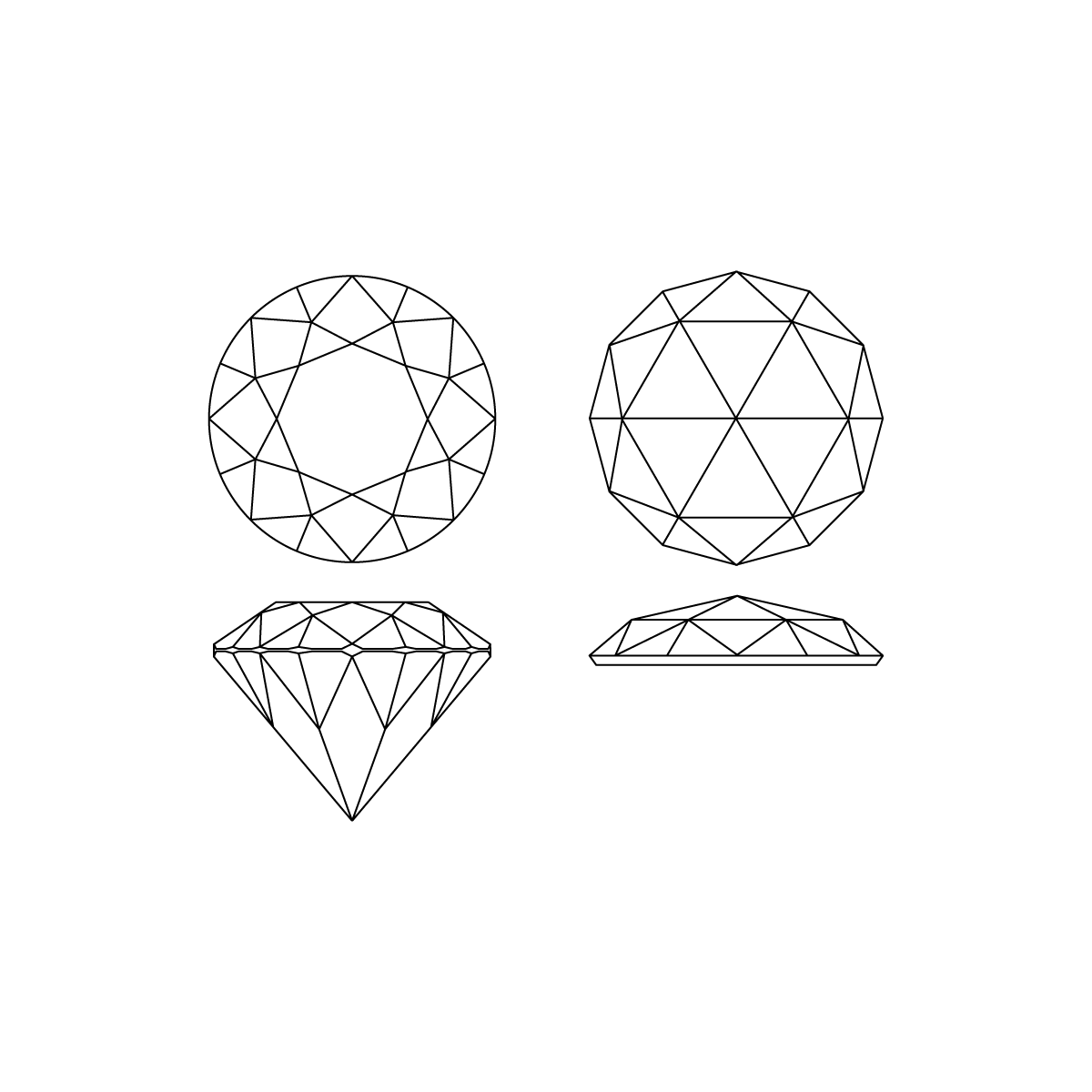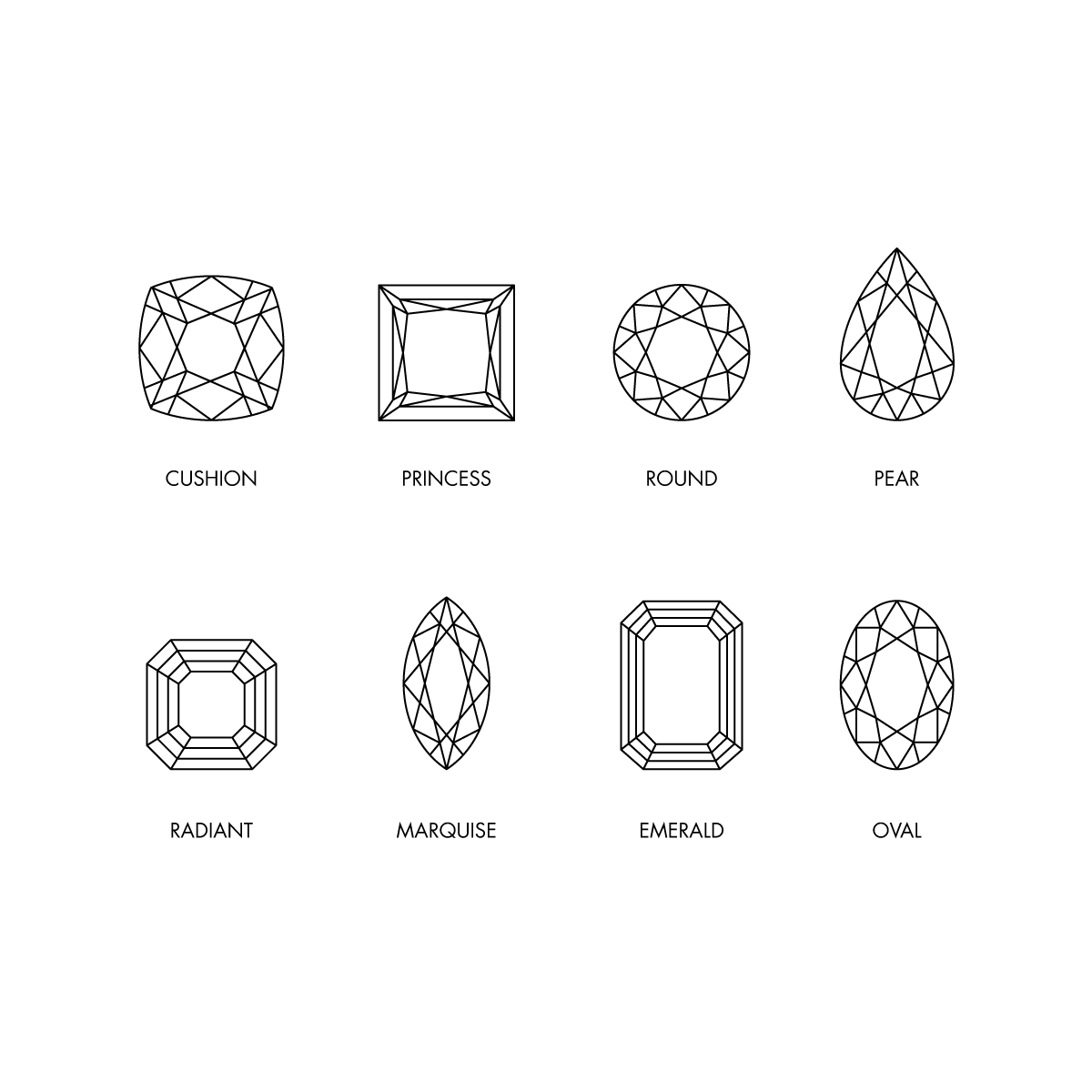Brilliant cut vs. Rosecut diamonds

Brilliant-Cut (left)
In 1919, the standard brilliant-cut for diamonds was established, marking the pinnacle of precision in refracting light to showcase the captivating brilliance inherent to diamonds. This brilliant-cut diamond shape takes on the appearance of a cone, ingeniously designed to maximize the internal play of light, which is visible through its flat top.
Rosecut (right)
Prior to this breakthrough in gem-cutting, diamonds were commonly fashioned to reflect light from their surfaces, exemplified by the rosecut diamond with its broad facets and flat base. The rosecut diamond, resembling a graceful dome, imparts a more subtle and gentle play of light—a romantic vintage alternative to the dazzling brilliance of the brilliant-cut.
In 1919, the standard brilliant-cut for diamonds was established, marking the pinnacle of precision in refracting light to showcase the captivating brilliance inherent to diamonds. This brilliant-cut diamond shape takes on the appearance of a cone, ingeniously designed to maximize the internal play of light, which is visible through its flat top.
Rosecut (right)
Prior to this breakthrough in gem-cutting, diamonds were commonly fashioned to reflect light from their surfaces, exemplified by the rosecut diamond with its broad facets and flat base. The rosecut diamond, resembling a graceful dome, imparts a more subtle and gentle play of light—a romantic vintage alternative to the dazzling brilliance of the brilliant-cut.

